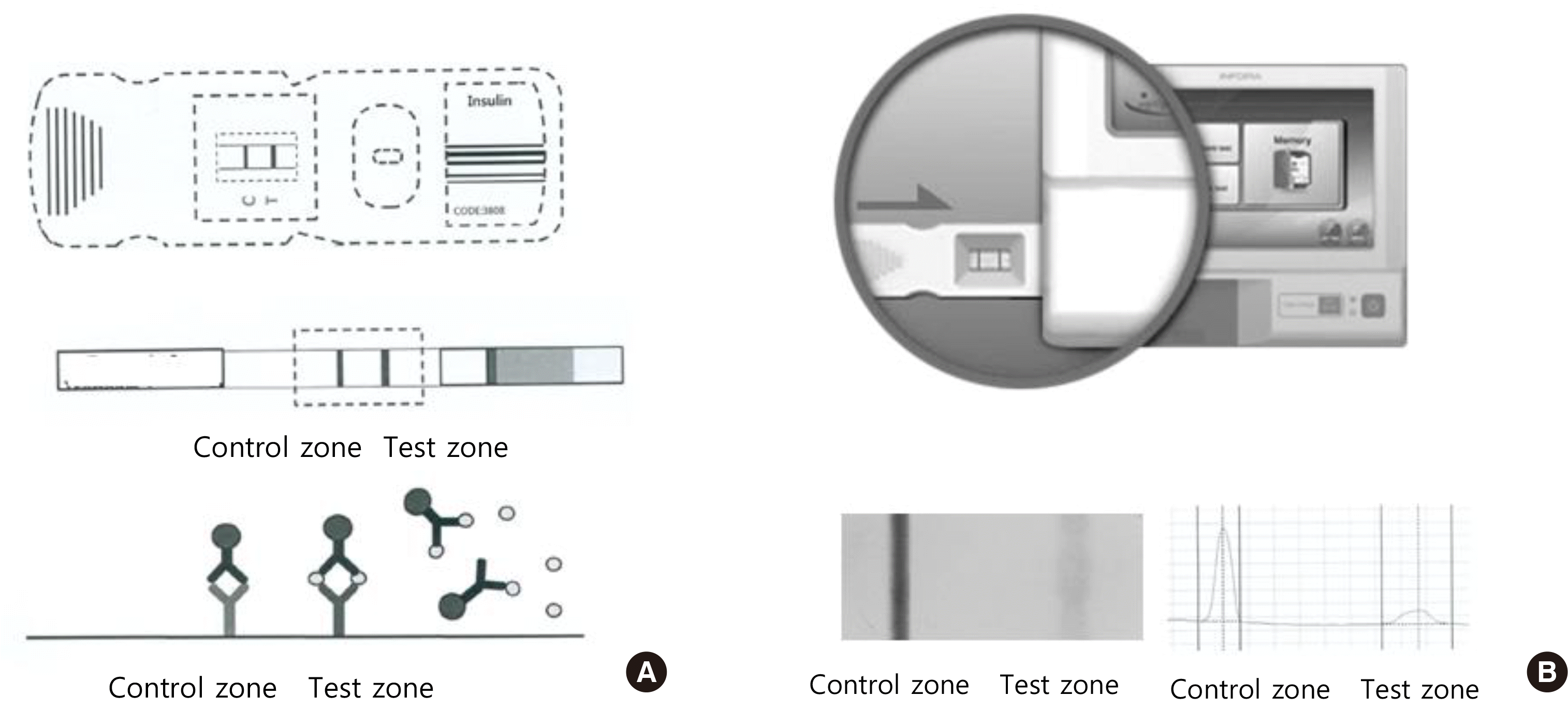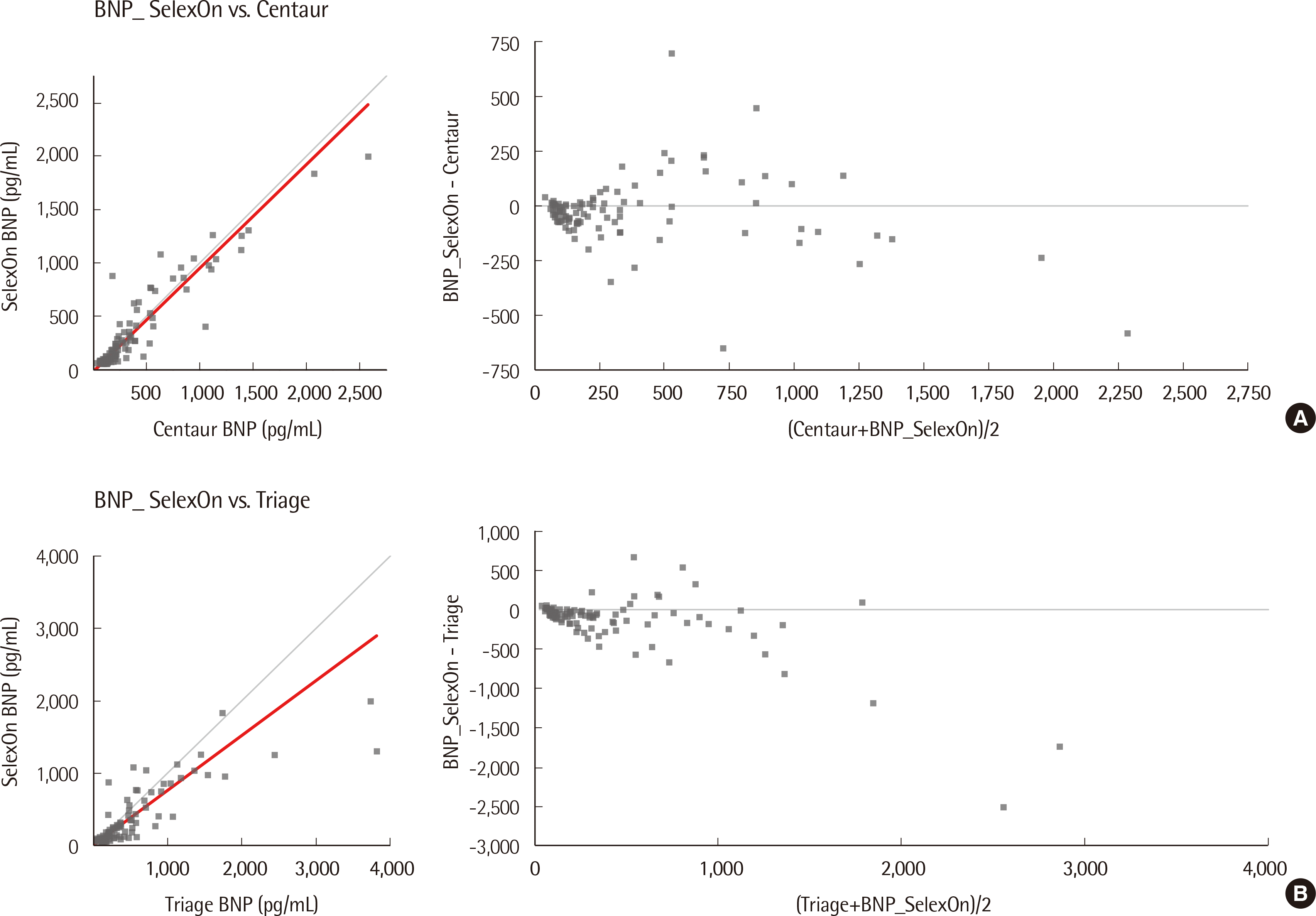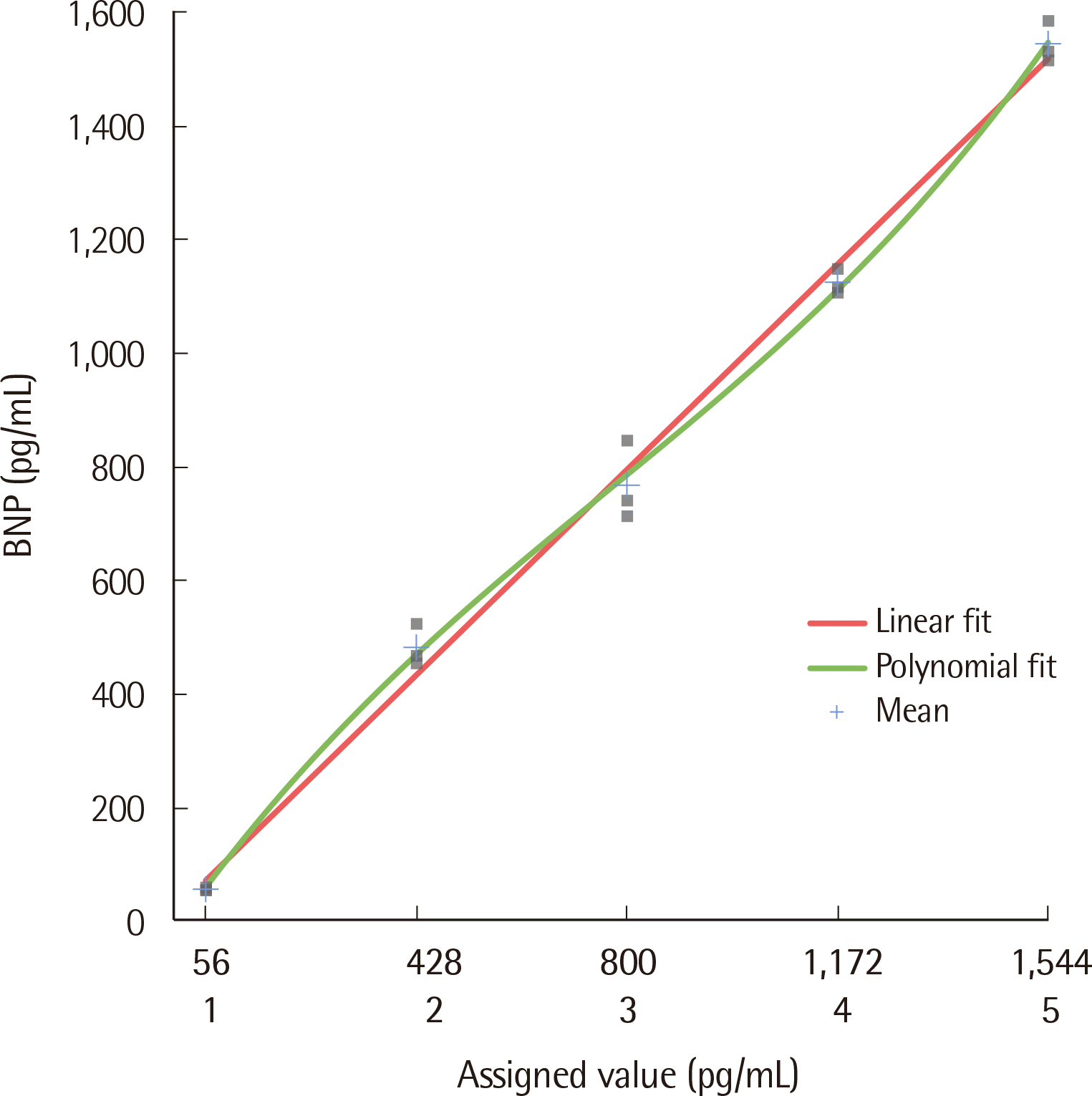1. Fu S, Ping P, Zhu Q, Ye P, Luo L. 2018; Brain natriuretic peptide and its biochemical, analytical, and clinical issues in heart failure: A narrative review. Front Physiol. 9:692. DOI:
10.3389/fphys.2018.00692. PMID:
29922182. PMCID:
PMC5996066.

2. Semenov AG, Tamm NN, Apple FS, Schulz KM, Love SA, Ler R, et al. 2017; Searching for a BNP standard: Glycosylated proBNP as a common calibrator enables improved comparability of commercial BNP immunoassays. Clin Biochem. 50:181–5. DOI:
10.1016/j.clinbiochem.2016.11.003. PMID:
27823960.

3. Dickstein K, Cohen-Solal A, Filippatos G, McMurray JJ, Ponikowski P, Poole-Wilson PA, et al. 2008; ESC guidelines for the diagnosis and treatment of acute and chronic heart failure 2008: The task force for the diagnosis and treatment of acute and chronic heart failure 2008 of the European Society of Cardiology. Developed in collaboration with the Heart Failure Association of the ESC (HFA) and endorsed by the European Society of Intensive Care Medicine (ESICM). Eur J Heart Fail. 10:933–89. DOI:
10.1016/j.ejheart.2008.08.005. PMID:
18826876.
4. Clinical and Laboratory Standards Institute. 2014; User veri cation of precision and estimation of bias; Approved guideline-Third edition. CLSI document EP15-A3. Clinical and Laboratory Standards Institute;Wayne, PA:
5. Apple FS, Panteghini M, Ravkilde J, Mair J, Wu AH, Tate J, et al. 2005; Quality speci cations for B-type natriuretic peptide assays. Clin Chem. 51:486–93. DOI:
10.1373/clinchem.2004.044594. PMID:
15738513.
6. Clinical and Laboratory Standards Institute. 2003; Evaluation of the linearity of quantitative measurement procedures: A statistical approach; Approved guideline. CLSI document EP06-A. Clinical and Laboratory Standards Institute;Wayne, PA:
7. Clinical and Laboratory Standards Institute. 2013; Measurement procedure comparison and bias estimation using patient samples; Approved guideline-Third edition. CLSI document EP09-A3. Clinical and Laboratory Standards Institute;Wayne, PA:
8. Clinical and Laboratory Standards Institute. 2010; Defining, establishing, and verifying reference intervals in the clinical laboratory; Approved guideline-Third edition. CLSI document EP28-A3c. Clinical and Laboratory Standards Institute;Wayne, PA:
9. Plebani M, Siest G. 2006; Natriuretic peptides and evidence-based quality specifications. Clin Chem Lab Med. 44:355–7. DOI:
10.1515/CCLM.2006.089. PMID:
16599825.

10. Wu AH, Packer M, Smith A, Bijou R, Fink D, Mair J, et al. 2004; Analytical and clinical evaluation of the Bayer ADVIA Centaur automated B-type natriuretic peptide assay in patients with heart failure: a multisite study. Clin Chem. 50:867–73. DOI:
10.1373/clinchem.2003.026138. PMID:
15010423.

11. Clerico A, Carlo Zucchelli G, Pilo A, Passino C, Emdin M. 2006; Clinical relevance of biological variation: the lesson of brain natriuretic peptide (BNP) and NT-proBNP assay. Clin Chem Lab Med. 44:366–78. DOI:
10.1515/CCLM.2006.063. PMID:
16599827.

12. Bruins S, Fokkema MR, Römer JW, Dejongste MJ, van der Dijs FP, van den Ouweland JM, et al. 2004; High intraindividual variation of B-type natriuretic peptide (BNP) and amino-terminal proBNP in patients with stable chronic heart failure. Clin Chem. 50:2052–8. DOI:
10.1373/clinchem.2004.038752. PMID:
15345664.

13. Ponikowski P, Voors AA, Anker SD, Bueno H, Cleland JGF, Coats AJS, et al. 2016; 2016 ESC Guidelines for the diagnosis and treatment of acute and chronic heart failure: The task force for the diagnosis and treatment of acute and chronic heart failure of the European Society of Cardiology (ESC). Developed with the special contribution of the Heart Failure Association (HFA) of the ESC. Eur Heart J. 37:2129–200. DOI:
10.1093/eurheartj/ehw128. PMID:
27206819.
14. Prontera C, Zaninotto M, Giovannini S, Zucchelli GC, Pilo A, Sciacovelli L, et al. 2009; Proficiency testing project for brain natriuretic peptide (BNP) and the N-terminal part of the propeptide of BNP (NT-proBNP) immunoassays: The CardioOrmocheck study. Clin Chem Lab Med. 47:762–8. DOI:
10.1515/CCLM.2009.153. PMID:
19402791.

15. Kang SY, Suh JT, Kim MH, Lee WI, Lee HJ. 2005; Evaluation of BNP assays with Access 2 and AxSYM BNP in comparison with Point-of-Care Triage BNP assay. Korean J Lab Med. 25:300–5.
16. Clerico A, Zaninotto M, Passino C, Plebani M. 2017; New issues on measurement of B-type natriuretic peptides. Clin Chem Lab Med. 56:32–9. DOI:
10.1515/cclm-2017-0433. PMID:
28809748.

17. Alehagen U, Goetze JP, Dahlström U. 2007; Reference intervals and decision limits for B-type natriuretic peptide (BNP) and its precursor (Nt-proBNP) in the elderly. Clin Chim Acta. 382:8–14. DOI:
10.1016/j.cca.2007.03.005. PMID:
17433809.

18. Keyzer JM, Hoffmann JJ, Ringoir L, Nabbe KC, Widdershoven JW, Pop VJ. 2014; Age- and gender-specific brain natriuretic peptide (BNP) reference ranges in primary care. Clin Chem Lab Med. 52:1341–6. DOI:
10.1515/cclm-2013-0791. PMID:
24781675.







 PDF
PDF Citation
Citation Print
Print




 XML Download
XML Download